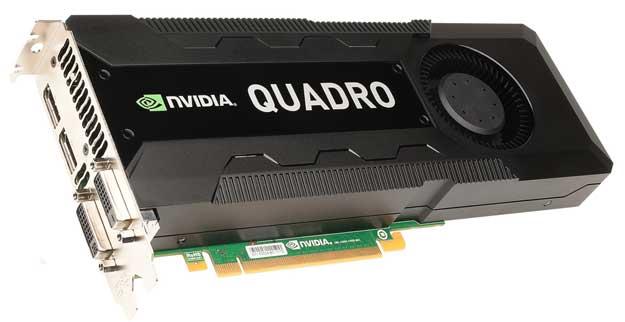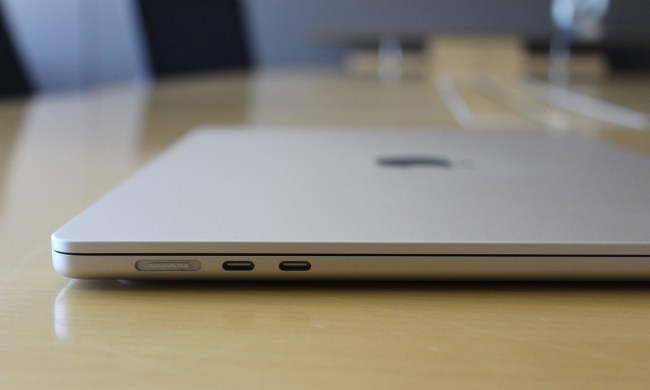
At the International Broadcasters Convention in Amsterdam, graphics card developer Nvidia announced the Quadro K5000 for Mac. Besides offering powerful performance for color editing, 3D rendering, and gaming, the card could also help reassure nervous Apple-using professionals that the Mac Pro is a machine with a future.
The Quadro K5000 will support Cinema 4K display, the ultra-high resolution format used for professional feature film work that’s now making its way to home theaters. It has two DVI-I ports and two miniDisplay ports, allowing it to drive four displays simultaneously. Nvidia also promises that the new Kepler architecture will provide double the processing power at lower wattage consumption than the Fermi architecture of previous cards.
The promise of improvement over previous cards is a tacit acknowledgement from Nvidia that it’s trying to do better than last time. Nvidia’s previous high-end Mac card, the Quadro 4000, suffered from poorly written drivers, giving inferior performance in many tests than ostensibly lower-spec cards from AMD.
The Quadro K5000 card is designed from the ground-up for Apple’s Mac Pro desktop computer, bringing the machine up to the latest standard in graphics performance. But it comes at a time when many of the professionals who’ve bought Mac Pro machines are wondering if its time to abandon ship. Ars Technica reported earlier this year that many major film and television companies, disappointed by the new Final Cut X and worried by the lack of Mac Pro updates, were starting to contemplate breaking up with that roguish rebel from Cupertino. Since then, Apple’s done little to reassure pro users, and this summer’s underwhelming Mac Pro update didn’t quell their fears, especially when it became clear that Thunderbolt technology is still not included on these supposedly top-of-the-line machine.
In a well-reported piece last year, tech writer Robin Harris claimed that Apple itself was unsure whether it should continue to develop the Mac Pro, or put it out to pasture and complete the company’s transformation into a maker of mainstream-friendly consumer electronics. Although Tim Cook assured the audience at this year’s WWDC that Mac Pro users would get “something really great” in 2013, this year’s trickle of minor updates have computer buyers wondering if the system is even prepared to meet their needs right now, much less over the multiple years a professional user expects to use a system.
The inability of the Mac Pro to process 4K video has been cited by industry watchers as the lacunae that would finally force film and video professionals to abandon the Mac platform. By stepping in where Apple was M.I.A., Nvidia has bought the Mac Pro a little more time to convince pro users that Apple still wants their business.



